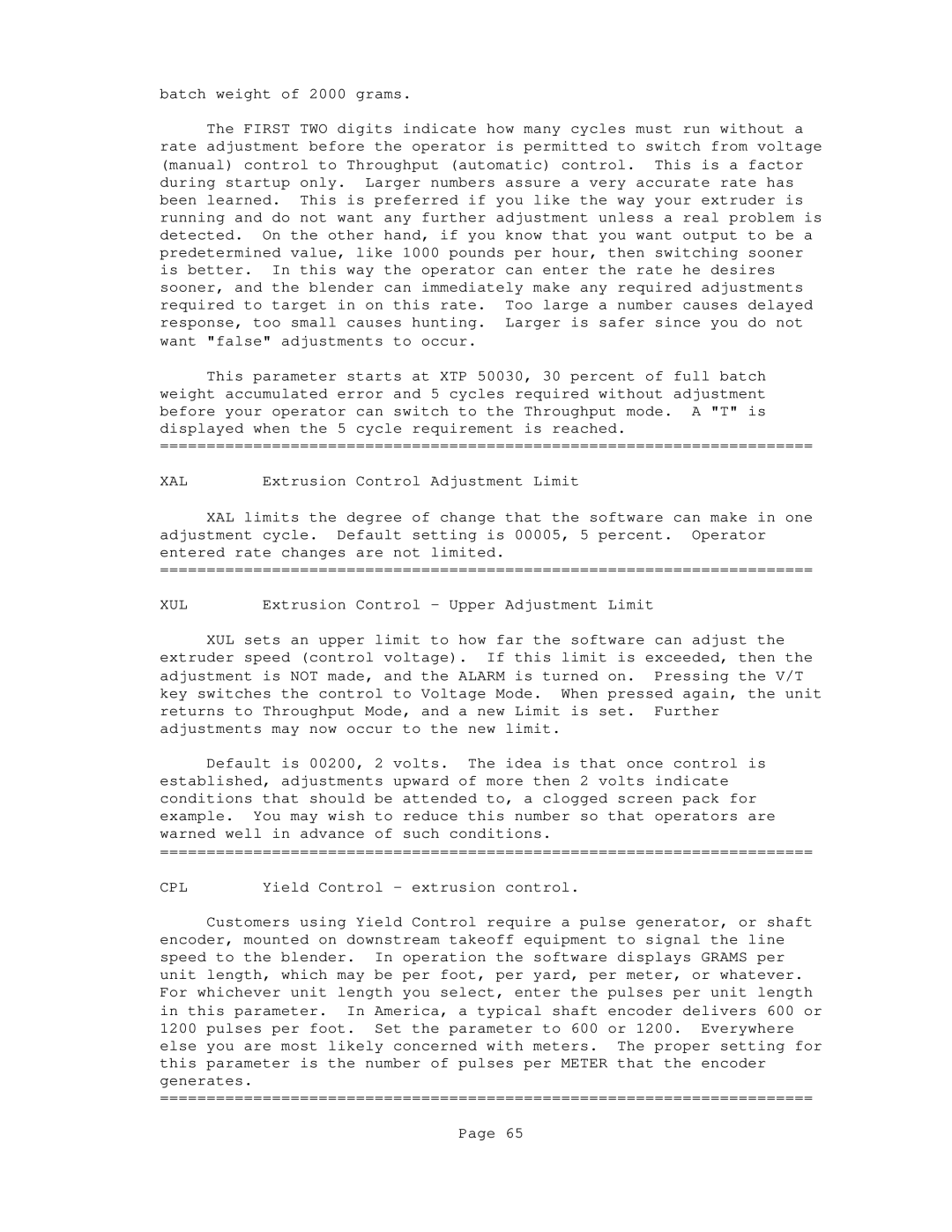batch weight of 2000 grams.
The FIRST TWO digits indicate how many cycles must run without a rate adjustment before the operator is permitted to switch from voltage (manual) control to Throughput (automatic) control. This is a factor during startup only. Larger numbers assure a very accurate rate has been learned. This is preferred if you like the way your extruder is running and do not want any further adjustment unless a real problem is detected. On the other hand, if you know that you want output to be a predetermined value, like 1000 pounds per hour, then switching sooner is better. In this way the operator can enter the rate he desires sooner, and the blender can immediately make any required adjustments required to target in on this rate. Too large a number causes delayed response, too small causes hunting. Larger is safer since you do not want "false" adjustments to occur.
This parameter starts at XTP 50030, 30 percent of full batch weight accumulated error and 5 cycles required without adjustment before your operator can switch to the Throughput mode. A "T" is displayed when the 5 cycle requirement is reached.
======================================================================
XAL | Extrusion Control Adjustment Limit |
XAL limits the degree of change that the software can make in one adjustment cycle. Default setting is 00005, 5 percent. Operator entered rate changes are not limited.
======================================================================
XUL | Extrusion Control - Upper Adjustment Limit |
XUL sets an upper limit to how far the software can adjust the extruder speed (control voltage). If this limit is exceeded, then the adjustment is NOT made, and the ALARM is turned on. Pressing the V/T key switches the control to Voltage Mode. When pressed again, the unit returns to Throughput Mode, and a new Limit is set. Further adjustments may now occur to the new limit.
Default is 00200, 2 volts. The idea is that once control is established, adjustments upward of more then 2 volts indicate conditions that should be attended to, a clogged screen pack for example. You may wish to reduce this number so that operators are warned well in advance of such conditions.
======================================================================
CPL | Yield Control - extrusion control. |
Customers using Yield Control require a pulse generator, or shaft encoder, mounted on downstream takeoff equipment to signal the line speed to the blender. In operation the software displays GRAMS per unit length, which may be per foot, per yard, per meter, or whatever. For whichever unit length you select, enter the pulses per unit length in this parameter. In America, a typical shaft encoder delivers 600 or 1200 pulses per foot. Set the parameter to 600 or 1200. Everywhere else you are most likely concerned with meters. The proper setting for this parameter is the number of pulses per METER that the encoder generates.
======================================================================
Page 65
